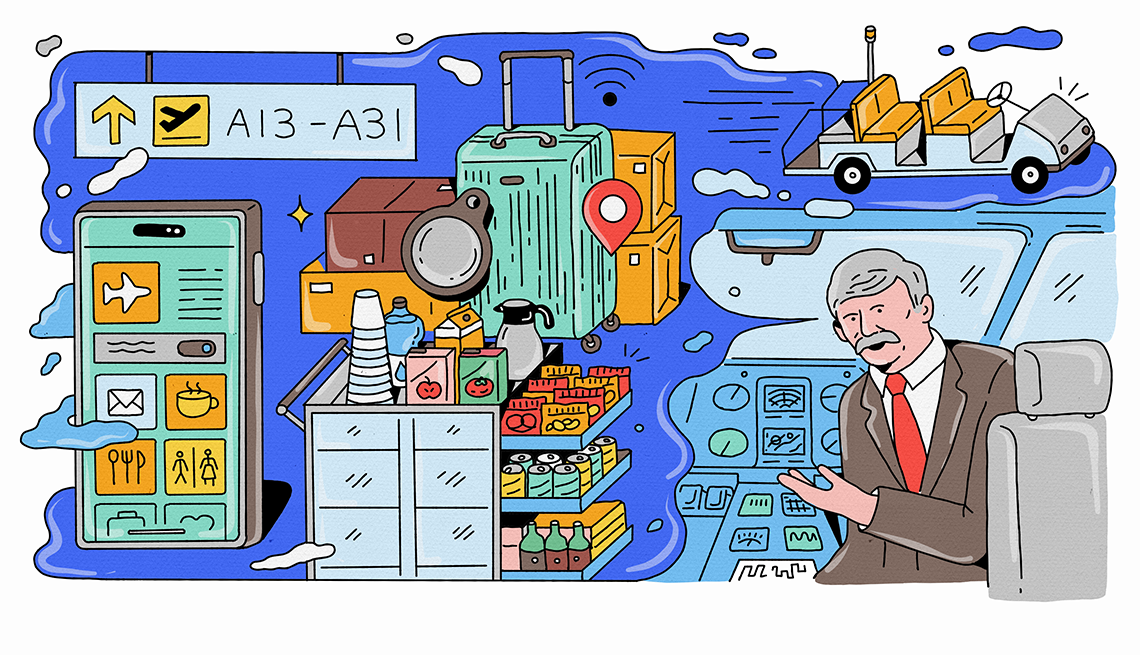
Insider secrets from an airline pilot | members only
- Select a language for the TTS:
- UK English Female
- UK English Male
- US English Female
- US English Male
- Australian Female
- Australian Male
- Language selected: (auto detect) - EN
Play all audios:
With more people on the move, flying presents increased obstacles — from crowded terminals to delayed flights to lost luggage. As airports have gotten ever bigger, people are walking longer
distances to reach their gates, which presents a unique challenge for older travelers with mobility issues. According to AARP 2024 Travel Trends research, among 50-plus travelers, 14
percent require accommodations for a disability for themselves and/or their companions, with 78 percent of those having a mobility disability. And 8 percent of 50-plus travelers express
concern about accessibility issues at the airport. In the United States, for example, the longest airport trek is at Dallas Fort Worth International Airport, where the walk from an entrance
in Terminal B to Terminal E is 2.16 miles, according to a recent survey by Kuru Footwear. That requires about 5,000 steps for the average person. What’s more, according to the U.S.
Department of Transportation, the airlines lost, damaged or delayed 2.8 million bags last year. What’s a traveler to do? We turned to a veteran airline, corporate and general aviation
pilot, Capt. John Cox, for answers. Cox is the president and CEO of Safety Operating Systems LLC — an aviation consultancy in flight and safety management, accident investigations and
emergency response planning. Cox, 71, who flew for US Airways, has flown more than 14,000 hours with over 10,000 hours in command of jet airliners. Here, he reveals some secrets from the
cockpit, what to know inside the cabin and offers advice on minimizing air travel hassles. SECRETS FROM THE COCKPIT HOW OFTEN IS AUTOPILOT USED AND WHEN? Today, most flights are flown by the
autopilot, but most landings are manual. The autopilot is switched on after the plane gets a few thousand feet above the ground, and then the pilots manage the flight through the
auto-flight system until 4 to 5 miles from the airport. Then they switch auto-flight off and manually land the plane unless visibility is restricted, in which case they leave the autopilot
on for landing. Pilots will look out the windshield and adjust for height, speed, etc., but if visibility is restricted, they can’t do that. The autopilot uses radio signals so it can land
in much lower visibility, as low as 300 feet. WHAT HAPPENS IF AN AIRPLANE LOSES ALL POWER? The redundancy on airplanes is much greater than people realize. A plane is capable of flight on
just one engine. … It’s very rare to lose all engines. I can think of three times it’s happened in a 50-year career. … Pilots are trained to fly with an inoperative engine and know how to
get it restarted in flight. … There are multiple generators on the plane and battery backups, too. There are also multiple electrical and hydraulic systems. We train for the loss of those
systems. I’ve had a number of different failures. … But the plane is not in danger. That’s how we get the safety record we have. Aviation is the safest form of transportation ever designed.
DO PILOTS HAVE TO PUT ON THE SEAT BELT SIGN AT THE SLIGHTEST WOBBLE? AND IF SO, SHOULD THAT ALLEVIATE PASSENGERS’ CONCERNS? Not at the slightest wobble, but if bumps are expected, we turn
the seat belt sign on. If we hear that other flights are experiencing turbulence, we will turn on the sign. Some turbulence cannot be predicted, so it is very important to keep your seat
belt fastened when you are in your seat.